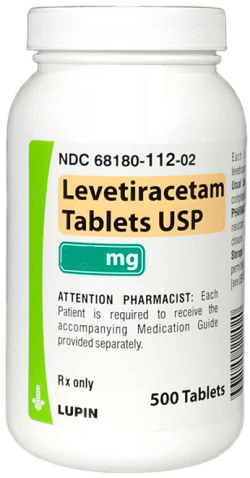Myoclonus and the Cavalier King Charles Spaniel
-
 What It Is
What It Is - Symptoms
- Causes
- Diagnosis
- Treatment
- What You Can Do
- Research News
- Related Links
- Veterinary Resources
Many cavalier King Charles spaniels, as they age (average age 8 years), experience periodic involuntary tremors, usually up and down nodding of the head and eye blinking. The frequency of these events may be daily or more often. Click here or on the photo of the Blenheim cavalier at right to watch a video of its episode.
What It Is
Myoclonus in cavaliers is an involuntary movement syndrome displaying tremors, spasmodic jerky contractions of groups of muscles, mainly of the head (such as, rapid eye movements, nodding, or shuddering) and forelegs when the dog is standing or sitting. The movements can be "positive" (caused by contraction of the muscles) or, rarely, "negative" (loss of muscular control). The syndrome can be progressive with affected dogs suffering more frequent and severe jerks which may cause the dog to fall or stumble.
Myoclonic seizures in general medical terms of dogs and humans are not the same thing as myoclonus in cavaliers. Myoclonic seizures are associated with abnormal brain signals and epilepsy syndromes. Myoclonus is a twitch or spasm of a muscle. In humans, hiccups (hiccoughs) are a form of myoclonus, due to a spasm of the diaphragm, which is the muscle controling air in the lungs.
In a November 2024 article, the clinical signs and progression of myoclonus in 27 cavalier King Charles spaniels were researched. The ressearchers concluded:
"Myoclonus in CKCS tends to increase in frequency and severity with increasing age. The proportion of dogs that had concurrent GTCS [generalized tonic-clonic seizures] was low. Later-onset behavioral changes suggestive of cognitive decline are commonly reported. Although the number of dogs prescribed medication was relatively low, there often was an initial positive response to LEV followed by later deterioration. These findings support the possibility of an underlying neurodegenerative process."
See, also this January 2025 YouTube presentation by Dr. Clare Rusbridge, discussing the characteristics of myoclonus in older cavaliers.
RETURN TO TOP
Symptoms
Myoclonus
signs usually include frequent and brief involuntary tremors,
particularly nodding or bobbing of the dog's
 head.
The dog does not lose complete consciousness during the episodes but
gives the appearance of a very brief loss of control or awareness, as if
having an absence seizure*.
Episodes may be as brief as less than 10 seconds. Other rarer signs
include movements of:
head.
The dog does not lose complete consciousness during the episodes but
gives the appearance of a very brief loss of control or awareness, as if
having an absence seizure*.
Episodes may be as brief as less than 10 seconds. Other rarer signs
include movements of:
• Facial features like rapid eye blinking
• Neck
• Forelegs
• Hind legs
• Back
• Abdomen
* The International League Against Epilepsy (ILAE) defines absence seizures as “sudden cessation of activity with a brief pause and staring, sometimes with eye fluttering and head nodding or other automatic behaviors”. Absence seizures are clinically described as a transient cessation of activity with staring, unresponsiveness and “blanking out” episodes. They previously were referred to as petit mal seizures.
Click on the photo of the
Blenheim cavalier at the top of this page to watch a video of its episode. See, also,
the
 video of this ruby cavalier at right, by clicking on its photo. See,
also,
this YouTube video.
video of this ruby cavalier at right, by clicking on its photo. See,
also,
this YouTube video.
Over time, the myoclonus episodes tend to become more frequent, and in some older dogs, also more lengthy and severe.
In some cases of myoclonus, particularly older dogs have displayed any of a variety of changes in their behaviors, including becoming less playful, restless, anxious, obsessive, more attached to their owners, and even aggressive.
In a September 2015 article, the International Veterinary Epilepsy Task Force stated:
"Older Cavalier King Charles spaniels (>5 years old) have a high prevalence of myoclonus, which manifests most commonly as a brief jerking of the head and forelimbs when the dog is standing or sitting. Initially the syndrome is relatively benign but can be progressive with affected dogs suffering frequent jerks which may interfere with function, for example cause the dog to fall or stumble. The syndrome can be confused with focal epileptic seizures but generally does not respond to AEDs [antiepileptic drugs] licenced for dogs although may respond to levetiracetam."
In an abstract presented at the 2017 symposium of the European College of Veterinary Neurology (ECVN), a team of UK veterinary neurologists examined the records of 40 cavalier King Charles spaniels displaying myoclonic jerks. In these cases, the signs included rapid eyelid blinking, head nodding, shuddering, and exensions down the limbs resulting in falling or stumbling. The movements lasted for seconds, usually when the dog was stationary or sitting and did not lose consciousness. Multiple daily episodes were reported and increased in frequency and intensity over time. The median age of onset was 9 years, with a main range from 7 to 10 years. They found that the condition improved with treatment with levetiracetum and possibly corticosteroids.
In a March 2022 article, UK researchers reviewed the medical records of 39 cavaliers diagnosed with myocluonus. In this study, the researchers described the symptoms as:
"The myoclonic event was a mixture of positive and negative myoclonus and described as rapid eyelid blinking with head nodding/shuddering and variable extension down the thoracic limbs, that could result in falling or stumbling of the thoracic limbs. The movement lasted seconds had no obvious trigger and occurred mostly when stationary in a sternal or sitting position. It did not seem to be associated with loss of consciousness (see Video S1 and Video S2). Multiple daily episodes were seen and increased in frequency and intensity over time. Owners whose dogs would frequently fall, often disrupting them while eating, reported the myoclonus to interfere with the dog's quality of life. The mean age of onset of myoclonus was 8.38 years (SD ±1.96)."
These researchers concluded that the cavaliers had a "higher prevalence" of myoclonus after age 8 years, and that:
"Myoclonus is characterized by spontaneous onset, rapid eyelid blinking and head nodding, a jerking movement of the head sometimes extending down the thoracic limbs, occasionally involving the whole body and might cause the dog to stumble or fall. There was no apparent loss of consciousness. Myoclonus was not associated with a trigger or sleep but did occur when standing, sitting, or lying in a sternal position. Multiple episodes in a day were often reported. Clinical course was slowly progressive with the episodes becoming more frequent and more intense over time. The myoclonus observed in our cohort was not action-related nor stimulus sensitive. ... Based on the presenting features of myoclonus in our reported cohort a cortical or cortico-subcortical etiology is suspected."
In a November 2024 article, the clinical signs and progression of myoclonus in 27 cavalier King Charles spaniels were researched. The authors reported:
"Most CKCS experienced daily episodes of spontaneous myoclonus affecting predominantly the head, with variable involvement of the thoracic limbs, facial features, pelvic limbs, back, abdomen, and neck. There was a tendency for increasingly frequent and severe myoclonic episodes over time, both in dogs that received medical treatment and those that did not. ... Most dogs were reported to have displayed changes in behavior since the onset of myoclonic episodes (18/27). These changes most often involved being more attached to and dependent on the caregiver and less playful, although 3 dogs had a preference to be on their own and 2 tended to display aggression to other dogs. Restless or obsessive behavior, excessive sleepiness and perceived loss of memory also were identified."
Ten of the cavaliers had been prescribed medication to treat the myoclonus. Levetiracetam was the most commonly prescribed medication. All dogs that received Levetiracetam had a positive response initially, including complete cessation of myoclonic episodes in half of the treated dogs. However, later recurrence of myoclonus was common, progressing in frequency and in severity and requiring increased dosages in some of the dogs. The ressearchers concluded:
"Myoclonus in CKCS tends to increase in frequency and severity with increasing age. The proportion of dogs that had concurrent GTCS [generalized tonic-clonic seizures] was low. Later-onset behavioral changes suggestive of cognitive decline are commonly reported. Although the number of dogs prescribed medication was relatively low, there often was an initial positive response to LEV followed by later deterioration. These findings support the possibility of an underlying neurodegenerative process."
In other breeds, similar symptoms, when rapid and repetitive, have been described as canine idiopathic head tremor syndrome (IHTS). See this April 2015 article.
RETURN TO TOP
Causes
In most cases of myoclonus in cavaliers, the onset of episodes is spontaneous, with nothing occurring seemingly to trigger them. Rarely do they occur as a result of the dog being touched or stressed or excited in any way. The cause of most all cases of myoclonus is not known.
Based upon the variety of symptoms and the progression of the severity of episodes as the dogs age, a neurological degeneration is suspected as a primary cause. In the March 2022 article, the UK researchers suggested that "a cortical or cortico-subcortical etiology is suspected."
Other forms of myoclonus, unrelated to this form affecting cavaliers, include those associated with epilepsy, canine distemper, Lafora disease, tonic-clonic seizures, myoclonic epilepsies, severe metabolic disease -- a disorder that disrupt the dog's metabolism conveting food to energy, such as kidney failure or liver failure. Some drugs, paricularly those that affect seratonin, such as fluoxetine, tramadol, and trazadone, may cause a form of myoclonus. Also, ironically, it is possible that some anti-epileptic drugs, including gabapentin and pregabalin, may prompt the signs of myoclonus.
Other breed-specific versions of myoclonus have been reported in miniature Australian shepherds, Irish wolfhounds, and Spanish greyhounds.
Other possible causes of these jerky movements, apart from myoclonus, include (1) steroid-responsive tremor syndrome, (2) cerebellitis (inflammation of the cerebellum), (3) exposure to toxins, including pesticides, amphetamines, narcotics, macadamia nuts, marijuana, (4) endocrine disease, (5) infections such as rabies or distemper, (6) bromide toxicity.
In a March 2014 article, UK clinicians report that a cavalier developed generalized appendicular repetitive myoclonus as a result of a toxicity reaction to dosages of potassium bromide, which had been prescribed to treat idiopathic epilepsy. The CKCS improved after the bromide dosage was reduced, and no similar episodes were reported at follow ups of 26 months.
In a November 2024 article, the clinical signs and progression of myoclonus in 27 cavalier King Charles spaniels were researched. The ressearchers concluded:
"Myoclonus in CKCS tends to increase in frequency and severity with increasing age. The proportion of dogs that had concurrent GTCS [generalized tonic-clonic seizures] was low. Later-onset behavioral changes suggestive of cognitive decline are commonly reported. Although the number of dogs prescribed medication was relatively low, there often was an initial positive response to LEV followed by later deterioration. These findings support the possibility of an underlying neurodegenerative process."
RETURN TO TOP
Diagnosis
Myoclonus usually is diagnosed by witnessing and describing the episodes. Thus video footage of episodes at home are helpful to clinicians. The veterinarians first attempt to exclude other causes, since the symptoms are so similar to epileptic seizures.
Diagnostics to rule out other diseases may include neurological examination (which should be normal), blood tests, magnetic resonance imaging (MRI), and/or cerebrospinal fluid (CSF) anaysis. The value of these tests do not appear to aid in diagnosing the cause of myoclonus as much as to aid in eliminating other causes.
RETURN TO TOP
Treatment
Most cases of myoclonus go untreated, as the dogs rarely display any signs of consequences following their episodes. If the disorder progresses, then medication may be started.
 Medical treatment, usually for more severe cases, typically would include levetiracetam
(Keppra), an anticonvulsant. It appears to be relatively safe for dogs, and reportedly rarely has any
adverse side effects and does not appear to affect the liver or liver
enzymes. In an
April 2024 artcle, the researchers reported finding that
"Levetiracetam can be used effectively to rapidly stop myoclonic
seizures and to decrease the frequency of myoclonic seizures." However,
long term administration of levetiracetam has been found in some
instances to lose its effectiveness. Dr. Clare Rusbridge has
recommended, in her
January 2025 YouTube video, dosages of 10 to 20 mg/kg. 2 to 4 times
days, starting low and tirtating up slowly.
Medical treatment, usually for more severe cases, typically would include levetiracetam
(Keppra), an anticonvulsant. It appears to be relatively safe for dogs, and reportedly rarely has any
adverse side effects and does not appear to affect the liver or liver
enzymes. In an
April 2024 artcle, the researchers reported finding that
"Levetiracetam can be used effectively to rapidly stop myoclonic
seizures and to decrease the frequency of myoclonic seizures." However,
long term administration of levetiracetam has been found in some
instances to lose its effectiveness. Dr. Clare Rusbridge has
recommended, in her
January 2025 YouTube video, dosages of 10 to 20 mg/kg. 2 to 4 times
days, starting low and tirtating up slowly.
Other medications may include corticosteroids such as prednisolone, and gabapentin. However, gabapentin has been known to worsen caes of myoclonus in some cavaliers.
In a September 2015 article, the International Veterinary Epilepsy Task Force stated:
"The syndrome can be confused with focal epileptic seizures but generally does not respond to AEDs [antiepileptic drugs] licenced for dogs although may respond to levetiracetam."
In a November 2024 article, the clinical signs and progression of myoclonus in 27 cavalier King Charles spaniels were researched. Ten of the cavaliers had been prescribed medication to treat the myoclonus. Levetiracetam was the most commonly prescribed medication. All dogs that received Levetiracetam had a positive response initially, including complete cessation of myoclonic episodes in half of the treated dogs. However, later recurrence of myoclonus was common, progressing in frequency and in severity and requiring increased dosages in some of the dogs.
In a March 2025 article, Korean veterinary clinicians reported a case study of a cavalier diagnosed with hydrocephalus and a 2-year history of increasingly frequent seizures which suddenly developed myoclonus immediately following medication with the pre-anesthetic remifentanil in preparation for an MRI scan.Remifentanil (Ultiva) is a synthetic opioid drug used for sedation in preparation for general anesthesia. Themyoclonus improved with midazolam (Versed) (0.2 mg/kg IV), and the plannedMRI scan was continued. The MRI showed existing hydrocephalus, but no other abnormal findings. The cavalier recovered without additional seizures. Midazolam is a benzodiazepine medication used for anesthesia, premedication before surgical anesthesia, and procedural sedation, and to treat severe agitation.
RETURN TO TOP
What You Can Do
If your cavalier experiences episodes which you suspect is myoclonus, try to video these events to show to the veterinarian. Also, keep a diary of myoclonus events, including their dates and lengths of time.
RETURN TO TOP
Research News
March 2025:
Myoclonus in a cavalier is successfully treated with midazolam.
 In
a
March 2025 article, Korean veterinary clinicians Changhoon Nam,
Inhyung Lee, and Won-gyun Son (right) report a case study of a
cavalier King Charles spaniel diagnosed with hydrocephalus and a 2-year
history of increasingly frequent seizures which suddenly developed
myoclonus immediately following medication with the pre-anesthetic
remifentanil in preparation for an MRI scan.Remifentanil (Ultiva) is a
synthetic opioid drug used for sedation in preparation for general
anesthesia. Themyoclonus improved with midazolam (0.2 mg/kg IV), and the
plannedMRI scan was continued. The MRI showed existing hydrocephalus,
but no other abnormal findings. The cavalier recovered without
additional seizures. Midazolam is a benzodiazepine medication used for
anesthesia, premedication before surgical anesthesia, and procedural
sedation, and to treat severe agitation.
In
a
March 2025 article, Korean veterinary clinicians Changhoon Nam,
Inhyung Lee, and Won-gyun Son (right) report a case study of a
cavalier King Charles spaniel diagnosed with hydrocephalus and a 2-year
history of increasingly frequent seizures which suddenly developed
myoclonus immediately following medication with the pre-anesthetic
remifentanil in preparation for an MRI scan.Remifentanil (Ultiva) is a
synthetic opioid drug used for sedation in preparation for general
anesthesia. Themyoclonus improved with midazolam (0.2 mg/kg IV), and the
plannedMRI scan was continued. The MRI showed existing hydrocephalus,
but no other abnormal findings. The cavalier recovered without
additional seizures. Midazolam is a benzodiazepine medication used for
anesthesia, premedication before surgical anesthesia, and procedural
sedation, and to treat severe agitation.
January 2025:
Dr. Clare Rusbridge discusses myoclonus in older cavaliers in a
YouTube video.
 Veterinary
neurologist Dr. Clare Rusbridge (right) has produced a
January 2025 YouTube video on "Myoclonus in the older Cavalier King
Charles Spaniel". In it she discusses "6 things you should know". Those
include:
Veterinary
neurologist Dr. Clare Rusbridge (right) has produced a
January 2025 YouTube video on "Myoclonus in the older Cavalier King
Charles Spaniel". In it she discusses "6 things you should know". Those
include:
• What does myoclonus look like?
• What age?
• Other causes of myoclonus
• How is it diagnosed?
• How is it treated?
• How does it progress?
November 2024:
Study of myoclonus in 27 cavaliers finds progression in
frequency and severity.
 In a
November 2024 article, Drs. Matthew James (right), Mark Lowrie, and Clare
Rusbridge (right), researched the clinical signs and progression of myoclonus in
27 cavalier King Charles spaniels. They reported:
In a
November 2024 article, Drs. Matthew James (right), Mark Lowrie, and Clare
Rusbridge (right), researched the clinical signs and progression of myoclonus in
27 cavalier King Charles spaniels. They reported:
"Most CKCS experienced daily episodes of spontaneous myoclonus affecting predominantly the head, with variable involvement of the thoracic limbs, facial features, pelvic limbs, back, abdomen, and neck. There was a tendency for increasingly frequent and severe myoclonic episodes over time, both in dogs that received medical treatment and those that did not. ... Most dogs were reported to have displayed changes in behavior since the onset of myoclonic episodes (18/27). These changes most often involved being more attached to and dependent on the caregiver and less playful, although 3 dogs had a preference to be on their own and 2 tended to display aggression to other dogs. Restless or obsessive behavior, excessive sleepiness and perceived loss of memory also were identified."
Ten of the cavaliers had been prescribed medication to treat the myoclonus. Levetiracetam was the most commonly prescribed medication. All dogs that received Levetiracetam had a positive response initially, including complete cessation of myoclonic episodes in half of the treated dogs. However, later recurrence of myoclonus was common, progressing in frequency and in severity and requiring increased dosages in some of the dogs. The ressearchers concluded:
"Myoclonus in CKCS tends to increase in frequency and severity with increasing age. The proportion of dogs that had concurrent GTCS [generalized tonic-clonic seizures] was low. Later-onset behavioral changes suggestive of cognitive decline are commonly reported. Although the number of dogs prescribed medication was relatively low, there often was an initial positive response to LEV followed by later deterioration. These findings support the possibility of an underlying neurodegenerative process."
September 2022:
UK neurologists are seeking cavaliers with myoclonus.
 In a September 2022 article in the Veterinary
Record, UK neurologists
Matthew Green, Mark Lowrie, and Clare Rusbridge (right) have issued a "call for
cases" of cavalier King Charles spaniels which are suspected of having
myoclonus. They describe the condition as "recurrent and uncontrollable
episodes of abnormal jerk-like movements that may commonly involve the
head and face but also legs and body." They report "seeing increasing
numbers of Cavalier King Charles Spaniels with this condition." They
request:
In a September 2022 article in the Veterinary
Record, UK neurologists
Matthew Green, Mark Lowrie, and Clare Rusbridge (right) have issued a "call for
cases" of cavalier King Charles spaniels which are suspected of having
myoclonus. They describe the condition as "recurrent and uncontrollable
episodes of abnormal jerk-like movements that may commonly involve the
head and face but also legs and body." They report "seeing increasing
numbers of Cavalier King Charles Spaniels with this condition." They
request:
"We are hoping to find people that own, or have previously owned, Cavalier King Charles Spaniels with suspected myoclonus. We would ask you to provide a short video of the abnormal episodes for review byour neurology team, if possible, followed by a short online questionnaire to further study this condition. It is hoped that we can better understand the ways in which dogs are affected, which may then lead to improved recognition and management of the condition. If you think your dog may be affected, or you would like further information, please contact Matthew Green at Dovecote Veterinary Hospital, via e-mail: matthew.green@dovecoteveterinaryhospital.co.uk"
Click on the photo of the cavalier above to view a video of its episode of myoclonus, or click here.
March 2022:
Myoclonus (spasmodic jerky contractions of head and
forelimbs muscles) is more prevalent in older cavaliers, UK study
finds.
 In
a March
2022 article, UK researchers Carina Rotter (right),
Danielle Whittaker, and Clare Rusbridge reviewed the medical records of
39 cavalier King Charles spaniels diagnosed with myocluonus, a syndrome
displaying symptoms of spasmodic jerky contractions of groups of
muscles, mainly of the head and forelimbs when the dog is standing or
sitting. In this study, the researchers described the symptoms as:
In
a March
2022 article, UK researchers Carina Rotter (right),
Danielle Whittaker, and Clare Rusbridge reviewed the medical records of
39 cavalier King Charles spaniels diagnosed with myocluonus, a syndrome
displaying symptoms of spasmodic jerky contractions of groups of
muscles, mainly of the head and forelimbs when the dog is standing or
sitting. In this study, the researchers described the symptoms as:
"The myoclonic event was a mixture of positive and negative myoclonus and described as rapid eyelid blinking with head nodding/shuddering and variable extension down the thoracic limbs, that could result in falling or stumbling of the thoracic limbs. The movement lasted seconds had no obvious trigger and occurred mostly when stationary in a sternal or sitting position. It did not seem to be associated with loss of consciousness (see Video S1 and Video S2). Multiple daily episodes were seen and increased in frequency and intensity over time. Owners whose dogs would frequently fall, often disrupting them while eating, reported the myoclonus to interfere with the dog's quality of life. The mean age of onset of myoclonus was 8.38 years (SD ±1.96)."
 Click
on the photos of the two cavaliers here to view their videos, or click
this link for the ruby and
this link for the Blenheim.
Click
on the photos of the two cavaliers here to view their videos, or click
this link for the ruby and
this link for the Blenheim.
In addition to classic signs of myoclonus, 13 of the dogs (33%) had epileptic seizures or similar events. All of the dogs had Chiari-like malformation (CM), and 20 of them showed signs of CM-associated pain. Twenty of 30 dogs also had syringomyelia (SM), and 13 dogs had primary secretory otitis media (PSOM). Twenty-three of 30 had lateral ventriculomegaly, which was mild in 9/23 dogs, moderate in 11 and marked in 3 dogs. One dog had hydrocephalus which was managed with placement of a ventriculo-peritoneal shunt. Twenty-three dogs were being treated for CM/SM with gabapentin or pregabalin. The researchers concluded that the cavaliers had a "higher prevalence" of myoclonus after age 8 years, and that:
"Myoclonus is characterized by spontaneous onset, rapid eyelid blinking and head nodding, a jerking movement of the head sometimes extending down the thoracic limbs, occasionally involving the whole body and might cause the dog to stumble or fall. There was no apparent loss of consciousness. Myoclonus was not associated with a trigger or sleep but did occur when standing, sitting, or lying in a sternal position. Multiple episodes in a day were often reported. Clinical course was slowly progressive with the episodes becoming more frequent and more intense over time. The myoclonus observed in our cohort was not action-related nor stimulus sensitive. ... Based on the presenting features of myoclonus in our reported cohort a cortical or cortico-subcortical etiology is suspected."
January 2020:
Myoclonic jerks are reported in 40 older cavaliers in UK.
In
an abstract presented at the 2017 symposium of the European College
of Veterinary Neurology (ECVN) and
 published
in January 2020, a team of UK veterinary neurologists (C. Rusbridge
[left], P.J.Watson, C.J. Driver, A. Tauro, R.Fernandes, J.Rose, F.
Constantino-Casas, F. Salguero-Bodes) examined the records of 40
cavalier King Charles spaniels displaying myoclonic jerks. Myoclonus is
a syndrome of jerky contractions of groups of muscles, mainly of the
head and forelimbs when sitting or standing. In these cases, the signs
included rapid eyelid blinking, head nodding, shuddering, and exensions
down the limbs resulting in falling or stumbling. The movements lasted
for seconds, usually when the dog was stationary or sitting and did not
lose consciousness. Multiple daily episodes were reported and increased
in frequency and intensity over time. The median age of onset was 9
years, with a main range from 7 to 10 years. They found that the
condition improved with treatment with levetiracetum and possibly
corticosteroids.
published
in January 2020, a team of UK veterinary neurologists (C. Rusbridge
[left], P.J.Watson, C.J. Driver, A. Tauro, R.Fernandes, J.Rose, F.
Constantino-Casas, F. Salguero-Bodes) examined the records of 40
cavalier King Charles spaniels displaying myoclonic jerks. Myoclonus is
a syndrome of jerky contractions of groups of muscles, mainly of the
head and forelimbs when sitting or standing. In these cases, the signs
included rapid eyelid blinking, head nodding, shuddering, and exensions
down the limbs resulting in falling or stumbling. The movements lasted
for seconds, usually when the dog was stationary or sitting and did not
lose consciousness. Multiple daily episodes were reported and increased
in frequency and intensity over time. The median age of onset was 9
years, with a main range from 7 to 10 years. They found that the
condition improved with treatment with levetiracetum and possibly
corticosteroids.
September 2015:
International Veterinary Epilepsy Task Force reports on
myoclonus in
cavaliers.
 In a
September 2014 article, the International
Veterinary Epilepsy Task Force, consisting of neurologists and other
veterinary specialists from the US, UK, and throughout Europe
(Velia-Isabel Hülsmeyer, Andrea Fischer, Paul J.J. Mandigers [right], Luisa
DeRisio, Mette Berendt, Clare Rusbridge, Sofie F.M. Bhatti, Akos
Pakozdy, Edward E. Patterson, Simon Platt, Rowena M.A. Packer, Holger A.
Volk) issues their massive "current understanding of idiopathic epilepsy
of genetic or suspected genetic origin in purebred dogs", including, of
course, the cavalier King Charles spaniel. Their primary findings
regarding the CKCS included "myoclonus" (spasmodic jerky
contraction of groups of muscles) as a potential breed-specific disease
which may mimic idiopathic epilepsy. They stated:
In a
September 2014 article, the International
Veterinary Epilepsy Task Force, consisting of neurologists and other
veterinary specialists from the US, UK, and throughout Europe
(Velia-Isabel Hülsmeyer, Andrea Fischer, Paul J.J. Mandigers [right], Luisa
DeRisio, Mette Berendt, Clare Rusbridge, Sofie F.M. Bhatti, Akos
Pakozdy, Edward E. Patterson, Simon Platt, Rowena M.A. Packer, Holger A.
Volk) issues their massive "current understanding of idiopathic epilepsy
of genetic or suspected genetic origin in purebred dogs", including, of
course, the cavalier King Charles spaniel. Their primary findings
regarding the CKCS included "myoclonus" (spasmodic jerky
contraction of groups of muscles) as a potential breed-specific disease
which may mimic idiopathic epilepsy. They stated:
"Older Cavalier King Charles spaniels (>5 years old) have a high prevalence of myoclonus, which manifests most commonly as a brief jerking of the head and forelimbs when the dog is standing or sitting. Initially the syndrome is relatively benign but can be progressive with affected dogs suffering frequent jerks which may interfere with function, for example cause the dog to fall or stumble. The syndrome can be confused with focal epileptic seizures but generally does not respond to AEDs [antiepileptic drugs] licenced for dogs although may respond to levetiracetam."
RETURN TO TOP
RETURN TO TOP
Veterinary Resources
Neurological diseases of the Cavalier King Charles spaniel. Rusbridge, C. J. Small Anim. Prac., June 2005, 46(6): 265-272. Quote: "Head nodding Occasionally CKCS may present with the complaint of head nodding. Face twitching may also be seen and the body may be observed to bounce up and down when the dog is standing stationary. Occasionally the dog may stagger or appear to lose balance. Episodes tend to last a few seconds and may be very frequent. This movement disorder can have a variety of causes and underlying CNS pathology such as GME and syringomyelia should be ruled out and treated. It is more common in geriatric CKCS. The episodes stop during sleep and when walking. Investigation into the exact aetiology is ongoing."
Unusual manifestation of bromide toxicity (bromism) in an idiopathic epileptic dog already treated with phenobarbital. Fabio Stabile, Alberta de Stefani, Luisa De Risio. Vet. Rec. March 2014; doi: 10.1136/vetreccr-2014-000043. Quote: A three-year seven-month-old female spayed Cavalier King Charles spaniel was diagnosed with idiopathic epilepsy. Because of poor seizure control, the dog was started on oral treatment with potassium bromide as adjunctive treatment to phenobarbital. The dog presented eight days following bromide loading, having developed sedation, general proprioceptive ataxia and generalised appendicular repetitive myoclonus. The serum bromide concentration was 15.9 mg/ml (target range 1 mg/ml to 2.5 mg/ml), which was suggestive of a bromide overdose. The dog improved after reduction of bromide dosing and no similar episodes were reported by the owners at a follow up of 26 months. To the authors’ knowledge this is the first report describing generalised repetitive myoclonus related to bromide toxicity.
Clinical and Breed Characteristics of Idiopathic Head Tremor Syndrome in 291 Dogs: A Retrospective Study. Linda G. Shell, John Berezowski, Mark Rishniw, Belle M. Nibblett, Patrick Kelly. Vet. Med. International. April 2015; doi: 10.1155/2015/165463. Quote: Objective: To establish signalment and phenomenology of canine idiopathic head tremor syndrome (IHTS), an episodic head movement disorder of undetermined pathogenesis. Design: Retrospective case series. Animals: 291 dogs with IHTS diagnosed between 1999 and 2013. Procedures: Clinical information was obtained from an online community of veterinary information aggregation and exchange (Veterinary Information Network, 777 W Covell Boulevard, Davis, CA 95616) and conducted with their approval. Information on breed, sex, age of onset, tremor description, mentation during the event, effect of distractions and drugs, diagnostics, presence of other problems, and outcome was analyzed. Results: IHTS was found in 24 pure breeds. Bulldogs, Labrador Retrievers, Boxers, and Doberman Pinschers comprised 69%; mixed breeds comprised 17%. Average onset age was 29 months (range: 3 months to 12 years). First episode occurred before 48 months of age in 88%. Vertical (35%), horizontal (50%), and rotational (15%) movements were documented. Possible trigger events were found in 21%. Mentation was normal in 93%. Distractions abated the tremor in 87%. Most dogs did not respond to antiepileptic drugs. Conclusions and Clinical Relevance: This retrospective study documents IHTS in many breeds including Labrador Retrievers, Boxers, and mixed breeds.
International Veterinary Epilepsy Task Force’s current understanding of idiopathic epilepsy of genetic or suspected genetic origin in purebred dogs. Velia-Isabel Hülsmeyer, Andrea Fischer, Paul J.J. Mandigers, Luisa DeRisio, Mette Berendt, Clare Rusbridge, Sofie F.M. Bhatti, Akos Pakozdy, Edward E. Patterson, Simon Platt, Rowena M.A. Packer, Holger A. Volk. BMC Vet. Res. September 2015;11:175. Quote: "Older Cavalier King Charles spaniels (>5 years old) have a high prevalence of myoclonus [spasmodic jerky contraction of groups of muscles], which manifests most commonly as a brief jerking of the head and forelimbs when the dog is standing or sitting. Initially the syndrome is relatively benign but can be progressive with affected dogs suffering frequent jerks which may interfere with function, for example cause the dog to fall or stumble. The syndrome can be confused with focal epileptic seizures but generally does not respond to AEDs [antiepileptic drugs] licenced for dogs although may respond to levetiracetam (personal communication Clare Rusbridge February 2015). The pathogenesis of the myoclonus is as yet undetermined."
Classification of Involuntary Movements in Dogs: Myoclonus and Myotonia. M. Lowrie, L. Garosi. J. Vet. Intern. Med. May 2017; doi: 10.1111/jvim.14771. Quote: Myoclonus is a sudden brief, involuntary muscle jerk. Of all the movement disorders, myoclonus is the most difficult to encapsulate into any simple framework. On the one hand, a classification system is required that is clinically useful to aid in guiding diagnosis and treatment. On the other hand, there is need for a system that organizes current knowledge regarding biological mechanisms to guide scientific research. These 2 needs are distinct, making it challenging to develop a robust classification system suitable for all purposes. We attempt to classify myoclonus as “epileptic” and “nonepileptic” based on its association with epileptic seizures. Myotonia in people may be divided into 2 clinically and molecularly defined forms: (1) nondystrophic myotonias and (2) myotonic dystrophies. The former are a group of skeletal muscle channelopathies characterized by delayed skeletal muscle relaxation. Many distinct clinical phenotypes are recognized in people, the majority relating to mutations in skeletal muscle voltage-gated chloride (CLCN1) and sodium channel (SCN4A) genes. In dogs, myotonia is associated with mutations in CLCN1. The myotonic dystrophies are considered a multisystem clinical syndrome in people encompassing 2 clinically and molecularly defined forms designated myotonic dystrophy types 1 and 2. No mutation has been linked to veterinary muscular dystrophies. We detail veterinary examples of myotonia and attempt classification according to guidelines used in humans. This more precise categorization of myoclonus and myotonia aims to promote the search for molecular markers contributing to the phenotypic spectrum of disease. Our work aimed to assist recognition for these 2 enigmatic conditions.
Myoclonus in older Cavalier King Charles Spaniel – clinical and histopathological findings. C. Rusbridge, P.J.Watson, C.J. Driver, A. Tauro, R.Fernandes, J.Rose, F. Constantino-Casas, F. Salguero-Bodes. 30th Symposium ESVN-ECVN, Abstract #03; J. Vet. Intern. Med. January 2020; doi: 10.1111/jvim.15681. Quote: Myoclonus has been reported in the Cavalier King Charles spaniel (CKCS) but its characteristics are not well described. Medical records were searched for CKCS observed to have myoclonic jerks. 40 dogs were identified (25 female). Most had been referred originally for another disease. The event was described as rapid eyelid blinking with head nodding / shuddering and variable extension down the limbs that could result in falling or stumbling. The movement lasted seconds, had no obvious trigger, was most likely when stationary in a sternal or sitting position and did not appear associated with loss of consciousness. Multiple daily episodes were seen and increased in frequency and intensity with time. The median age of onset was 9 years (interquartile range 7-10 years). 29 of 40 CKCS had brain and spinal MRI. All had chiari-like malformation, 23 of 29 had ventriculomegaly and 19 of 29 had syringomyelia. 11 of 40 dogs had epilepsy (generalised tonic clonic seizures) or other paroxysmal event (episodic falling genetic clear). Age of onset of seizures for 8 dogs with epilepsy was +/- 1 year from onset of the myoclonus (median 7 years old). 3 owners reported signs suggesting progressive cognitive dysfunction. Histopathology of the brains from 4 CKCS were unremarkable. Anecdotally myoclonus was improved with levetiracetum and possibly corticosteroids. Myoclonic jerks are common in older CKCS and should not be assumed to be a consequence of syringomyelia. More evidence is required as to whether there is an association with generalised tonic‐clonic seizures and mental deterioration.
Myoclonus in older Cavalier King Charles Spaniels. Carina Rotter, Danielle Whittaker, Clare Rusbridge. J. Vet. Intern. Med. March 2022; doi: 10.1111/jvim.16404. Quote: Background: Myoclonus is observed in older Cavalier King Charles Spaniels (CKCS) but a full description is lacking. Objectives: The presence, age of onset, characteristics and treatment of myoclonic episodes were retrospectively evaluated in a cohort of CKCS which presented to 1 board-certified neurologist. Clinical data, imaging studies, presence of seizures and their management, as well as other comorbidities were noted. Animals: Thirty-nine CKCS that were presented to 2 institutions between 2001 and 2018 with signs consistent with myoclonus. Clinical examination, blood sampling, advanced diagnostic imaging, cerebrospinal fluid analysis, and record keeping of other comorbidities was performed. ... Twenty of 30 cases showed signs of SM [syringomyelia], 3 a presyrinx and 4 a central canal dilatation. OME [otitis media with effusion (primary secretory otitis media -- PSOM)] was visible in 13 dogs. ... The myoclonic event was a mixture of positive and negative myoclonus and described as rapid eyelid blinking with head nodding/shuddering and variable extension down the thoracic limbs, that could result in falling or stumbling of the thoracic limbs. The movement lasted seconds had no obvious trigger and occurred mostly when stationary in a sternal or sitting position. It did not seem to be associated with loss of consciousness. Multiple daily episodes were seen and increased in frequency and intensity over time. Owners whose dogs would frequently fall, often disrupting them while eating, reported the myoclonus to interfere with the dog's quality of life. The mean age of onset of myoclonus was 8.38 years (SD ±1.96). ... Methods: This is a retrospective case series, describing the presence of myoclonus in CKCS. Results: Clinical signs reported were spontaneous in onset, lasted a few seconds and consisted of rapid blinking with head nodding and variable extension down the thoracic limbs. Myoclonus occasionally led to stumbling of the thoracic limbs or collapse. Mean age of onset was 8.38 years (SD ±1.96). Thirteen of 39 dogs with myoclonus had paroxysmal events, such as generalized seizures (9/13). ... Twenty cases showed signs of CM-associated pain (CM-P) [Chiari-like malformation associated pain] and 9 dogs had SM specific signs in including phantom scratching (SM-S) [syringomyelia associated phantom scratching]. Two dogs displayed signs of cognitive dysfunction, with 1 dog described as tending to stare blankly into space, showing less interaction with the owner, wandering aimlessly when left alone and signs suggesting anxiety. Both dogs had seizures which were managed with imepitoin. Four dogs had pelvic limb orthostatic tremor, 1/4 involved 1 of the thoracic limbs as well. The tremor was present while standing, disappeared when walking. ... Twenty-three of 39 dogs were prescribed gabapentin/pregabalin due to CM-P and/or SM-S. It is questionable if gabapentin or pregabalin worsened the myoclonus; however, no deterioration of myoclonus after start of gabapentinoids was documented. Two of the cases were prescribed gabapentin after the myoclonus occurred and the myoclonus did not worsen but the nature of this study does not help to draw a conclusion and it remains questionable if myoclonus was drug-induced in these cases. ... Conclusions and Clinical Importance: Myoclonus occurs in middle-aged to older CKCS and seems to be another epiphenomena of this breed. A link to epilepsy might be present. ... Myoclonic jerks are reported in middle-aged to older CKCS and should not be assumed to be a consequence of SM. ... 100% of dogs that underwent MRI showed signs of CM and 66% SM, this resembles the overall reported breed prevalence in the general CKCS population. In other words, a link between CM and SM was neither proven nor disproven. The frequency of CM and SM was that expected for the age of the population and dogs could have myoclonus without CM or SM. ... There might be a link with generalized tonic-clonic seizures. It seems to be another epiphenomena for this breed Although the number of CKCS treated successfully with levetiracetam was low this could be a possible treatment for myoclonus in this breed. Further research to substantiate this is needed. (See video #1 and video #2.)
Use of levetiracetam for the successful treatment of suspected myoclonic seizures: five dogs (2016-2022). J. Linder, J. Mehra, S. Miller, M. J. Lewis, R. T. Bentley, S. Thomovsky. J. Sm. Anim. Pract. April 2024; doi: 10.1111/jsap.13719. Quote: Objectives: Myoclonic seizures are considered a type of generalised seizure characterised by brief, jerking movements of the body. The aim of this study is to describe cases of suspected canine myoclonic seizure of idiopathic aetiology and to discuss the successful use of the anticonvulsant levetiracetam as treatment in each of these cases. ... Most recently, myoclonus has also been reported in older Cavalier King Charles Spaniels – approximately 25% of this population of Cavaliers also experienced at least one generalised tonic–clonic seizure and 10% experienced another type of paroxysmal episode (Rotter et al., 2022). ... The cases included in this case series suggest that myoclonic seizures in dogs can be idiopathic in origin and, in some instances, be secondary to auditory stimuli in dogs. No breeds previously reported to have myoclonic seizures (Rhodesian Ridgebacks, Beagles with Lafora disease, Cavalier King Charles Spaniels) were included in the current study. There is the possibility that the myoclonic seizures were a result of a DIRAS1 mutation or Lafora disease; genetic testing was not performed in any cases. Meanwhile, the origin of myoclonus in Cavalier King Charles Spaniels is unknown and could originate from a cortical or subcortical aetiology. In the most recent case series published in this breed, 30 cases had MRI performed, all which had caudal occipital malformation syndrome, 13 had lateral ventriculomegaly, 20 had syringomyelia and 13 had otitis media (Rotter et al., 2022). ... Materials and Methods: Dogs with epileptic myoclonus suspected to be idiopathic in aetiology were considered for inclusion. Medical records were reviewed for physical and neurologic examination findings, clinicopathologic results, and diagnostic imaging results. All included dogs were treated with levetiracetam, and their response was reported. Results: Five dogs were included, all of which had suspected myoclonic seizures either observed in-person or on video recording by a board-certified veterinary neurologist. The duration of myoclonic seizures preceding treatment ranged from one day to one year. One dog also experienced a generalised tonic–clonic seizure. All dogs were treated with levetiracetam. Two dogs experienced long-term myoclonic seizure freedom (duration seizure-free of at least 1 year), and two dogs experienced marked decreased myoclonic seizure frequency. One dog experienced immediate abatement of myoclonic seizures, although levetiracetam was only utilised for 1 month following onset of myoclonic seizures in this patient. Clinical Significance: Myoclonic seizures can be idiopathic in aetiology. Levetiracetam can be used effectively to rapidly stop myoclonic seizures and to decrease the frequency of myoclonic seizures.
Characteristics and clinical course of myoclonus in Cavalier King Charles Spaniels. Matthew James, Mark Lowrie, Clare Rusbridge. J. Vet. Intern. Med. November 2024; doi: 10.1111/jvim.17227. Quote: Background: Myoclonus has been described in aging Cavalier King Charles Spaniels (CKCS), but the natural course of the disease and response to treatment have not been described. Objectives: Report the clinical features and course of myoclonus in CKCS. Animals: Twenty-seven caregivers provided questionnaire responses at a median of 24 months after the onset of myoclonus in their CKCS. Fifteen caregivers completed a second follow-up questionnaire at a median of 17 months after submission of the first questionnaire. Methods The caregivers of affected CKCS were invited to provide video footage for review. Owners of CKCS with videos demonstrating myoclonus then completed the online questionnaire for further evaluation. A second shortened questionnaire was sent to participants at least 6 months after completion of the first. Results: Most CKCS displayed spontaneous myoclonus affecting predominantly the head (25/27). Overall, the majority had episodes that increased in frequency (20/27) and severity (17/27). Eighteen dogs had developed changes in behavior since the onset of myoclonus. These dogs were typically older and had experienced myoclonic episodes for longer than dogs without behavioral changes. Generalized epileptic seizures were reported in 4/27 dogs. Ten dogs received medical treatment. Eight were prescribed levetiracetam; all had an initial decrease in episode frequency, but a subsequent increase in both frequency and severity of episodes was common. Conclusions and Clinical Importance: Myoclonus in CKCS tends to progress in frequency and severity regardless of treatment. Progressive behavioral changes suggestive of cognitive decline are common. These findings support the possibility of an underlying neurodegenerative process.
Opioid-Induced Myoclonus During Premedication in Two Dogs With Hydrocephalus Proactively Managed With Antiepileptic Medications. Changhoon Nam, Inhyung Lee, Won-gyun Son. Vet. Med. & Sci. March 2025; doi: 10.1002/vms3.70277. Quote: This report describes opioid-induced neurotoxicity (OIN) in two dogs with hydrocephalus undergoing the investigation of recurrent seizures; in both dogs, myoclonus occurred following premedication with butorphanol and remifentanil and resolved following the administration of midazolam. Thorough clinical evaluation excluded underlying systemic disease and increased intracranial pressure as possible causes, and opioid-induced modulation of gamma-aminobutyric acid (GABA) inhibitory and dopaminergic interneurons was assumed. Benzodiazepines, like midazolam, enhanced GABA and appeared to be effective in managing these symptoms. ... Dog 2: A 6-year-old, 9.6 kg, castrated male Cavalier King Charles Spaniel with hydrocephalus diagnosed by MRI, with a 2-year history of increasing seizure frequency and escalating doses of anticonvulsants (levetiracetam 10–20 mg/kg with the addition of gabapentin 10 mg/kg, per os, three times a day), presented to the Internal Medicine Service of the SNU-VMTH for seizure follow-up. The preanesthetic physical examination yielded unremarkable results. Blood analysis revealed a normal complete blood count, blood chloride level of 112.3 mmol/L (reference range, 113.2–122.9 mmol/L), blood sodium level of 142.5 mmol/L (reference range, 145.1–152.6 mmol/L), and blood alkaline phosphatase level of 114 IU/L (reference range, 0–97.9 IU/L). ... The dog was assessed as ASA physical status of 4 and was presented to the anaesthesiology service for a brain MRI scan. Remifentanil (loading dose, 2.4 µg/kg IV) was initially administered as a pre-medication, but a sudden myoclonus occurred immediately. The myoclonus improved with midazolam (0.2 mg/kg IV), and the planned MRI scan was continued. Anaesthesia was induced with propofol (6 mg/kg IV) and maintained with isoflurane (FE´Iso 0.76–1.1) in oxygen for 140 min. Perianesthetic HR (70–180 beats min−1) SpO2 (95%–100%), and PE´CO2 (30–45 mmHg [3.99–5.99 kPa]) were acceptable, except for MAP (55–110 mmHg). Hypotension (<60 mmHg, MAP) was treated with ephedrine (50 µg/kg IV), dobutamine (5-20 µg/kg/h IV), and dopamine (5–10 µg/kg/hour IV). The MRI showed existing hydrocephalus, but no other abnormal findings (Figure 1). The patient recovered without additional seizures. ... The findings suggest that even at therapeutic doses, certain opioids can cause OIN in dogs. Caution is advised when using opioids, particularly in dogs with pre-existing central nervous system disorders, and further research is needed to better understand dosage effects and alternative treatment options for OIN prevention.


CONNECT WITH US